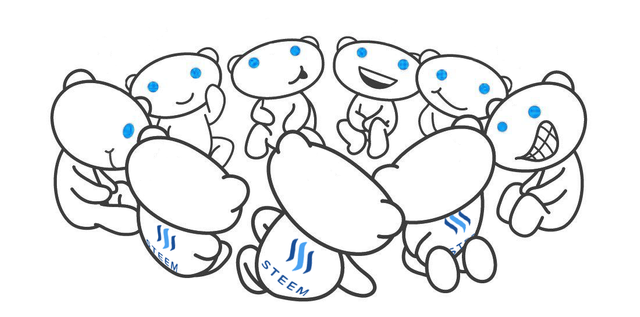Selfvotes, Circlejerks and Steem
As usual there is a lot of talk about self-votes, upvoting groups and bidbots. Essentially they are all the same. In one way or the other their participants make sure that they get (about) 100% of the steem inflation corresponding to their vested SP. Bidbots take a somewhat special place as they can not be directly fought by flagging posts. The operators have already gained sbd and do no longer care about post payouts. But that is a different topic I have already discussed here.
What I want to discuss now is the impact that self-votes, upvote-for-upvote, and other schemes to make sure you get your inflation, have on the steem ecosystem. Since it is always possible to make 12 empty posts and upvote them (the other methods only "look" better, i.e. by leasing SP to a bidbot some claim to be helping minnows advertise content and other lies and rationalisation), the only logical conclusion is to find that you already own your inflation. When you upvote someone else you are actually tipping them from your money. Because of that upvote you will have less steem than you could have had.
Instead of an inflationary system where people distribute their share of the inflation, we could build the same system on bitcoin, where people just pay small amounts of btc to content they like (of course in btc transaction fees make that impossible but have a look at BAT and the Brave browser. Also psychology may make it easier to gift inflation rather than "hard" money, but there is no mathematical underlying difference).
From a blockchain point-of-view steem is similar to other inflationary coins, for example XLM. Only that for lumens it is very simple to get at least 90% of your inflation by voting for an inflation pool and you never need to make any fake posts or follow other annoying procedures.
What sets steem apart is three things:
- Steem supports a social network. But the value generated by that network is not monetised by the stakeholders. There is no control of data and no advertisement on steem.
- Steem inflation is used to support the security of the distributed social network by paying the witnesses. This is great for the people that use the network, but meaningless for people who dont.
- Steem makes simpel to tipp the content of other users. This is great for the social network, but again does not matter when you are not using the social network.
It is easy to see that when non-curating voting starts to dominate, steem is just like any other inflationary coin, only with a social network attached. But there is a severe misalignment of interests. Investors and stakeholders have to pay for the network, but do not benefit from the value of that network. When the users have no more interest in participating and curating honestly, the network will start to fail and all we are left with is another inflationary coin, with only disadvantages compared to for example XLM, for both users and investors. Users of the steem-network dont need steem and investors may not want to use the network.
For this reason, the people with vested interest in steem should curate and punish harmful behaviour of the big abusers. But the wisdom that lies in cryptocurrency is to design systems where the interest of all participants are aligned and bad actors automatically loose money. Sadly seem is not such a system. Currently there are still a lot of good people here, but for the future I am not so sure how things will evolve.

Totally agree. HF20 should punish vote selling either by implementing quadratic voting or/and other tweaks to the reward system.
Sadly most witnesses are happy with the current situation and disguises it behind "helping the minnows" and "creates demand for SBD/STEEM" bullshit.
I have written about this in my blog (spanish)